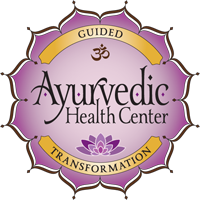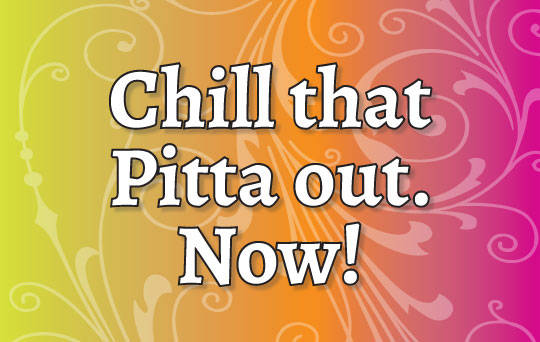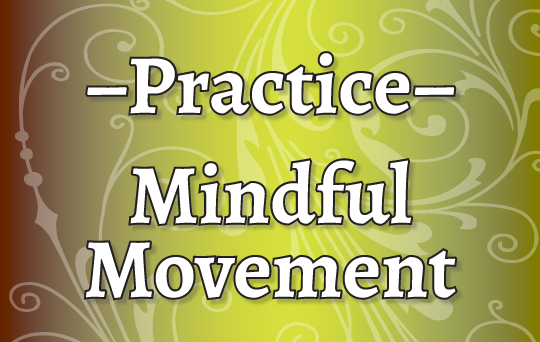This post is authored by Katrina Svoboda Johnson and was originally posted on BotanicalTherapy.com on April 7, 2019.
Today’s post features guest blogger Katrina Svoboda Johnson, AHP/CAP, LMP, SOMA, herbalist, and teacher of the Ayurvedic Health Center & Wellness Shop. The goal is to present you with her wellness and personal care perspective and knowledge as a practitioner.
 As anyone who has studied even a brief history of herbalism in the United States knows, herbalism was a primary form of medicine with a strong history and tradition of use. This changed when the allopathic model rose to prominence. Thankfully, herbalism has recently been staging a come-back, although it is still working to regain the trust and confidence of the public.
As anyone who has studied even a brief history of herbalism in the United States knows, herbalism was a primary form of medicine with a strong history and tradition of use. This changed when the allopathic model rose to prominence. Thankfully, herbalism has recently been staging a come-back, although it is still working to regain the trust and confidence of the public.
Ayurveda went through a similar cultural suppression as British colonists worked to wipe out indigenous forms of wisdom, including natural medicine. Fortunately, the Brits weren’t completely successful; much of the ancient knowledge has survived, and Ayurveda is enjoying a resurgence of popularity in India and has even expanded outward into the United States and Europe where it is increasingly becoming mainstream.
The efficacy of Western herbalism is well documented. We are fortunate in the United States to have so much biodiversity available to us—along with fairly easy access to herbs from all of the many varying climates of North America. We have a large natural pharmacopeia.
India, too, is a geographically diverse land with a dizzying array of plant diversity. Because of Ayurveda’s long and continuous history (5,000+ years), the use of herbs in Ayurveda is a detailed and sophisticated science. It has a depth of understanding that offers much to the practice of herbalism in the West. Ayurveda’s comprehensive approach to herbalism can greatly add to any Western herbalist’s practice.
I have been lucky to study herbalism from many aspects and from many teachers. Those who commune deeply with our plant allies are able to create wonderful healing magic. Each herbalist’s approach is a unique expression of who they are, and, of course, no one approach is inherently better than any other.
I collected books on herbs for years before I ever knew what to do with the herbs themselves. I would page through them and make notes of interesting tidbits of information, but I never felt like I had a framework for understanding how to make the magic come alive.
When I began my formal studies of Ayurveda, that framework presented itself in the three doshas (vata, pitta, kapha) and the qualities that are used to describe and understand them. It was a big moment for me; what had previously seemed beyond my grasp now made complete and total sense. In fact, there was an obviousness to working with herbs that I never would have guessed at previously.
Through the wisdom of Ayurveda I have found myself enjoying a deeper relationship with plant allies. Applying the principles of Ayurveda to herbs has demystified the world of plant medicine. Maybe this information will be helpful for you, too.

Ayurvedic Herbalism
Ayurvedic herbalism is careful to take many considerations into account when designing an herbal formula:
- the client’s constitution & current state
- the qualities of the herbs, including:
- temperature
- effect on bodily tissues
- the form in which to take the herbs
- the correct delivery mechanism for the herbs
- synergy of herbs
- the appropriate timing for taking the herbs
- proper dosing of the herbs
Finding Balance
There are two fundamental rules in Ayurveda:
- Like Increases Like
- Opposites Reduce Each Other
These two rules work hand-in-hand and mean that:
- more of any dosha or its quality (ie: heat) increases that dosha or quality;
- the application of an opposing dosha or quality (ie: cold) decreases that dosha or quality.
A practical example will make this clear: If you have a sunburn, your skin becomes hot, red, and inflamed. These qualities (heat, redness, inflammation) represent excessive Pitta dosha (fire element) at that particular location. You would never apply more heat to the sunburn as a way to treat it (this would be “Like Increases Like”). Rather, you would oppose the quality of heat with the quality of cold to restore balance and bring healing (ie: “Opposites Reduce Each Other”). You would, for instance, apply ice or aloe vera gel. Both of these are cooling and bring relief to the burned skin.
In designing Ayurvedic herbal formulas we use this line of reasoning when choosing which herbs to include (or not). For example, we choose particular herbs for a pitta-predominant individual who has a sunburn, and we choose different herbs for a vata- or kapha-predominant individual who also has a sunburn. The pitta-predominant person constitutionally carries a lot of heat while the vata and kapha types do not. A pitta-predominant person would need a stronger cooling agent to address the sunburn than would someone who is predominantly vata or kapha.
Constitution & Current State
As with your genetic DNA, your Ayurvedic constitution is unique and distinct to you. It takes into account your physical body as well as your mental–emotional body. This is a body–mind type that is comprised of the three doshas: vata (air element), pitta (fire element), and kapha (water and earth elements). All of us have all three doshas present within us; we vary in the proportion of the three doshas relative to each other—and in how they express or manifest.
Ayurvedic herbalists are intentional about which herbs are used based on the individual’s Ayurvedic constitution— as well as any current imbalances—and their combined qualities. Using the reference point of the constitution plus the “You are Here” of the imbalances, it is possible to chart a course back to the place of ideal balance with herbs. The benefit of using this approach is that an issue can be addressed without inadvertently causing further aggravation in another aspect (ie: tissue, organ, system) of the individual.
Qualities of the Herbs
Herbs carry specific energetics that we keep in mind when creating a formula; for example:
- heating or cooling;
- tonifying (building up of bodily tissues) or reducing (depleting to bodily tissues);
- moistening or drying
Temperature
Herbs are understood to have an inherent temperature, and an Ayurvedic herbalist chooses herbs for their desired heating or cooling effect. Some examples of herbs that impart a cooling action are: peppermint, dill, nettle, neem, and cilantro. Some herbs that are heating include: powdered ginger, cayenne, black pepper, basil, and cinnamon.
In our example of the person who has a sunburn, we would intentionally choose cooling herbs rather than herbs that have a heating effect. It may seem to be a minor consideration, but if you’ve ever been overheated, you know how overbearing more heat is on a hot summer’s day.
Another example of how important a consideration temperature is can be found with echinacea. This herb is a favored Western herb for working with colds. It is antiviral, antiseptic, alternative, and analgesic, making it a good choice for this purpose. Echinacea has a very cold quality to it, so in clients who constitutionally tend to run cold, echinacea works best if combined with a herb that has heating qualities (such as ginger). Used on its own, echinacea could drive the cold deeper into the system. In a client who constitutionally tends to run hot, however, the echinacea might pose no issues since its cold quality could nicely balance out a fever state.
Effect on Body Tissues
Herbs can influence how the body maintains its tissues. Herbs such as neem, turmeric, gentian, and nettle encourage the body to shed what no longer serves it. These reducing (catabolic) herbs are bitter and/or astringent and help the body to reduce weight and/or swelling (ie: metabolic wastes and edema). Other herbs build tissues up: oatstraw, licorice, shatavari, ashwagandha, slippery elm, and comfrey are examples of tonifying (anabolic) herbs. These herbs are anabolic; they help the body to increase tissue mass and/or increase the body’s capacity to maintain a higher level of wateriness.
In clients who are in a state of depletion, tissue-building herbs would be a better choice. Conversely, in clients who tend to carrying excess weight, reducing herbs might be a better option.
By a similar logic, we can choose demulcent herbs for clients whose tissues are dry and papery, and we can use astringent herbs to reduce swelling.
Form in which to Take the Herbs
Ayurveda considers what form of an herb would be best used for each person/circumstance. Whenever possible, the choice is made based on what is in the best interest of restoring balance to the individual rather than based on what a practitioner has easy access to. Fresh herbs (or freshly prepared formulations) are often preferred for their high amount of life-giving prana. In some cases, the qualities or properties of herbs change when they are dried.
Options include: fresh herbs (whole or chopped up) or dried herbs (powdered or whole). Herbs can be taken cooked into foods, in capsules, as an infusion (hot or cold), or as a decoction.
Delivery Mechanism
Ayurvedic herbalists carefully choose the delivery mechanism for the herbs based on what bodily tissue, system, or organ those herbs are targeted for. This helps to make the best use of the herbs and their actions.
Here’s the analogy: We want the herbs to get on the correct bus that will take them to their destination. The herbs are of no use if they can’t get to the correct location to do their work. So, Ayurveda makes use of specific vehicles that do just that. These vehicles each have an affinity for a specific tissue/system/organ and are easily able to deliver the herbs to their proper destination. Ayurveda calls these vehicles “anupana.” Anupanas include water, milk, ghee, vegetable oils, alcohol, honey, etc.
Each anupana has its own qualities: heating/cooling, tonifying/reducing, moistening/drying, etc. The practitioner designing an herbal formula keeps those in mind so that the anupana will be harmonious with the herbs that it is transporting. For example, an alcohol-based tincture combines the energetics and properties of the herb along with the energetics of the alcohol. Alcohol itself is primarily very heating and secondarily drying. This might be beneficial to the individual; it might not. For people with an addiction to alcohol, alcohol-based tinctures should be strictly avoided. Likewise, people with an excessive amount of heat in them (Pitta dosha) (ie: any inflammatory condition) should also avoid alcohol-based tinctures since they would experience an increase in heat—even if the herbs themselves have a cooling effect.
Synergy of Herbs
Ayurvedic herbalism will often use a combination of herbs to support a desired action. For example, Ashwagandha and
Bala are well known to enhance each other’s efficacy. These two herbs have similar influences of the doshas, balance each other’s inherent temperatures to deliver a neutral effect, specialize in targeting similar bodily tissues, share many of the same actions and indications, and work well with the same delivery mechanism. Ashwagandha and Bala work strongly in combination with each other, and we see their combined benefit working well for clients of all constitutions and states of imbalance where their use is indicated.
When to Take Herbs
Ayurveda considers the appropriate time to take an herbal formula. For example, if the intention of an herbal formula is to (positively) effect digestion, then you would take the herbs with the meal. The herbs might even be taken at a specific time during a meal (beginning, middle, end) to influence a particular aspect of digestion. If the intention of an herbal formula is to work with the mind (such as for boosting memory or relieving anxiety), the herbs would be taken as far away from meals as possible. Herbs may also be taken to address a specific dosha. If this is the case, herbs might be taken during the part of the day when that dosha is most predominant.
Whenever possible, Ayurveda prefers taking herbs as a proactive, preventative means (before deeper imbalances and symptoms arise—as with springtime allergies) vs. taking herbs during an acute, symptom-laden moment.
Dosing
The dosing of herbal formulas within the Ayurveda model is very intentional and is based in part on the body weight of the individual that will be taking the formula (higher dosing for those that weigh more; lower dosing for those that weigh less).
Ayurveda recognizes that herbs, being plants, have a threshold below which they deliver little therapeutic benefit. Compared to Western herbalism, Ayurvedic herbal formulas are generally taken in higher doses that are recognized to be therapeutic. This is especially true for herbs such as ashwagandha and shatavari, which, being starchy roots, can be safely taken more generously than other herbs can.
With Ayurveda’s focus on a person’s constitution, we find that people have optimal doses that are unique to them. We sometimes have to spend a small amount of time finding “your” dose—the amount of herbal formula taken to produce the desired result. While this may seem annoying to our Western culture that is habituated to taking a one size-fits-all pill in a bottle, Ayurveda recognizes that we differ in the rate at which we metabolize what we take into our bodies. Sometimes we are far enough out of balance that it takes a stronger dose of an herbal formula to get the job done. Allowing a short period of time to attune to how the body and herbs work together is good medicine in and of itself and begins a dialog where the body’s receptivity to the herbs is awakened and we can notice the effect that the herbs have on us.
For More Info
- Ayurveda
- about the doshas
- free eBook about the principles of Ayurveda
- determine your Ayurvedic constitution
About the author
Katrina Svoboda Johnson, AHP/CAP, LMP, SOMA, HERBALIST







